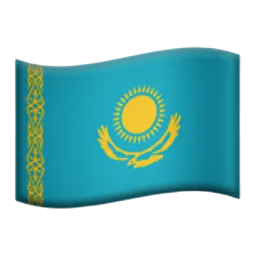AI-generated Visuals
At JetStyle, we’re ambassadors of meaningful design that is both functional and aesthetic. AI tools, such as Midjorney, DALL-E and Stable diffusion, have become a significant part of a designer’s work. We talked about the consequences of this integration with Alex Perminov, JetStyle’s designer in the PR department. All of the awesome visuals you see in our social media – LinkedIn, Twitter, Medium – and in our website blog are his job! Some of the images are generated using Midjourney or Stable Diffusion, as Alex keeps track of their updates and AI-based design trends. Here are a few key ideas:
Q: Are neural networks really ‘a new thing’?
Alex: Not really: the world started to talk about them in 1943. The first AI algorithm was developed in 1949. However, the popularity of AI has reached its peak only in the last few years, because it’s now capable of creating real art. Among the top graphic neural networks there are Midjourney, Stable Diffusion and DALL-E. These are the tools that designers implement most in their work.
.jpeg)
Q: Can neural networks fully substitute the work you do as a designer?
Alex: It’s a common misconception, and clearly, it has caused a huge buzz around so many professional communities. My experience demonstrates that neural networks can indeed create a beautiful website interface. However, it’s only a small part of my job. AI won’t be able to analyze the target audience of the service I’m working on, or perform a UX testing.
There’s also no such function as “Create something beautiful with one click”. Midjorney will help to automate routine tasks and enhance brainstorming – but the final result fully depends on our creative vision.
Q: Do Midjourney or DALL-E guarantee higher speed of your work?
Alex: Not at all, actually. A neural network can help with a specific type of tasks, for example, when you need a simplified or generalized image. Midjourney or DALL-E assist greatly with mood boards and concept art.
I would definitely design specific objects manually, “the old-fashioned” way. I also won’t use AI when I create a series of visuals united by one style, or when I need to show an object through different perspectives.
It’s not all about hype, your choice of tools should be guided solely by the task you’re working on.
.jpeg)
Q: Can you provide an example of how you use Midjourney for your work?
Alex: Let’s take a look at one of my favorite works in collaboration with AI. In fall of 2022 we released an article about metaverses and our predictions about the future of this phenomenon. My task was to create visuals for the article and a social media post to promote it.
At first, I created the concept of the future image – because neural networks can’t come up with an idea itself. In most cases, they will just come up with a random one. My idea was to illustrate metaverses as a magical portal to the new reality.
.jpeg)
After I sketched the first draft, I generated the character:
.jpeg)
And then started working on the surroundings – and here’s what Midjourney helped me with a lot. Neural networks are amazing at creating landscapes, exterior images and street views. Some of the first images generated with Midjourney were a bit too sci-fi and cyberpunk, so it took me some time to correct the prompts.
.jpeg)
When I was finally satisfied with the elements of the future visuals, my next task was to combine them into one image and animate it. We prefer animation for our social media posts, as it leads to higher audience engagement. This is another type of work I need to perform manually, as Midjourney does not animate images.
If we didn’t have access to the neural network, I would have to delegate the task to our illustrator team. Usually art of this level requires up to 2 days of work. My power duo with Midjourney allowed saving a lot of time so that the whole process took about 6 hours. Thus, illustrators can channel their creative power into more sophisticated work.
Q: What else do we expect from AI in terms of its functionality?
Alex: If we look at how fast neural networks are developing, there’s a chance they will evolve into one omni-potent universal network.
Still, there are many barriers to overcome on the way*:
- Anatomy issues – we’ve all had our share of laughs regarding the confusion Midjourney experiences with body parts,
- Interpretation of metaphors,
- Random neural mutations that we witness almost each time we generate something with AI.
- Lack of consistency. As for now, AI-based services aren’t capable of keeping up with customized stylistics, unless it’s a very popular one.
- Primitive neural animation features would be incredible, too.
*We wrote this article in spring 2023; we would not be surprised if by the time you’re reading this, AI has already evolved to solve these issues.
Q: One final recommendation for designers out there?
Alex: Don’t be scared of getting replaced by AI. You will, however, be replaced by a professional who knows how to work with AI. If we want to stay relevant, we need to adapt to new work conditions, study new tools and leave the comfort zone. Self-development is key.
***
If you have business tasks that you want to solve using AI-based tools, get in touch with us via orders@jet.style. Also, we’d love to hear about your experience with neural networks, let us know.








